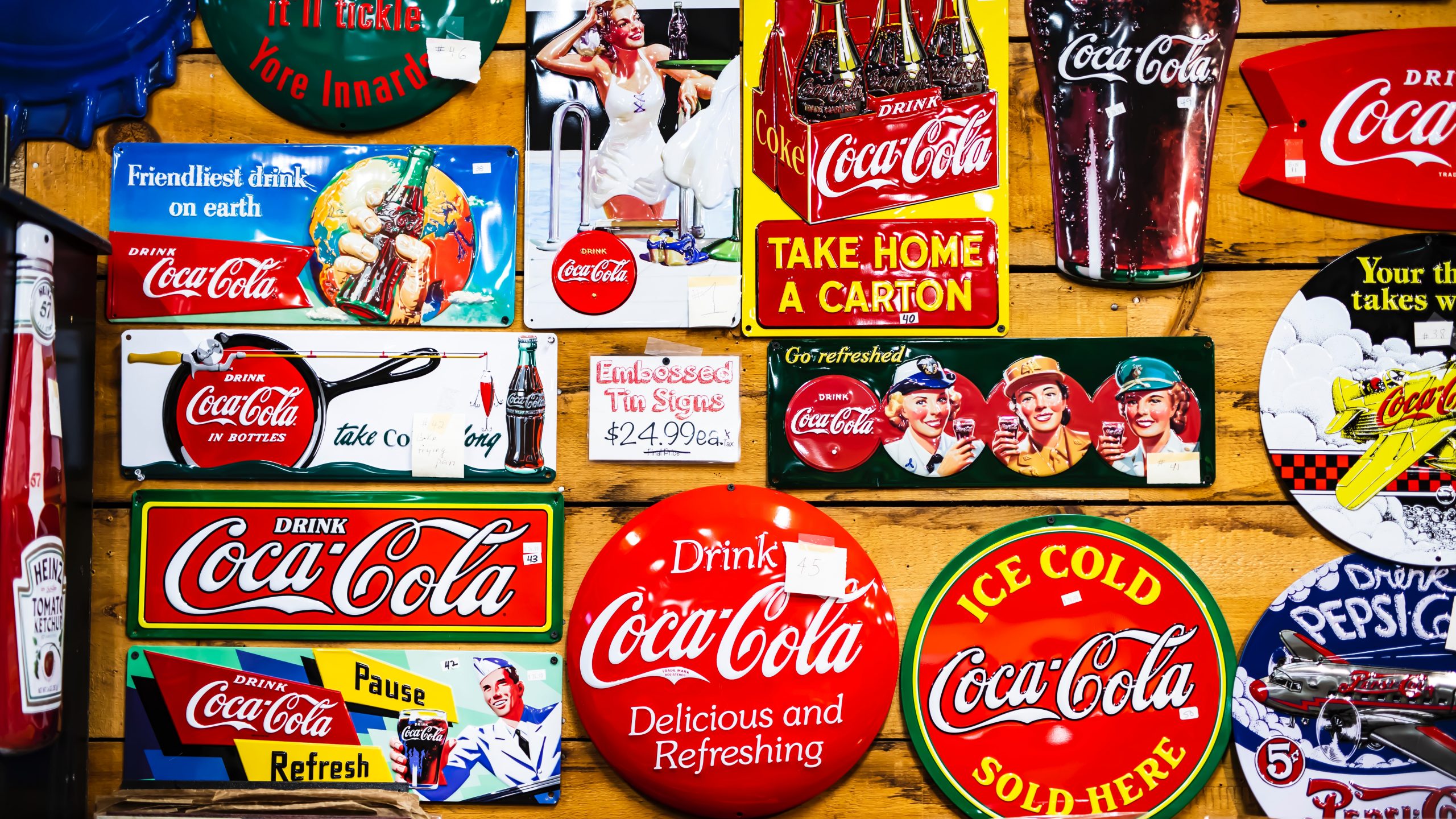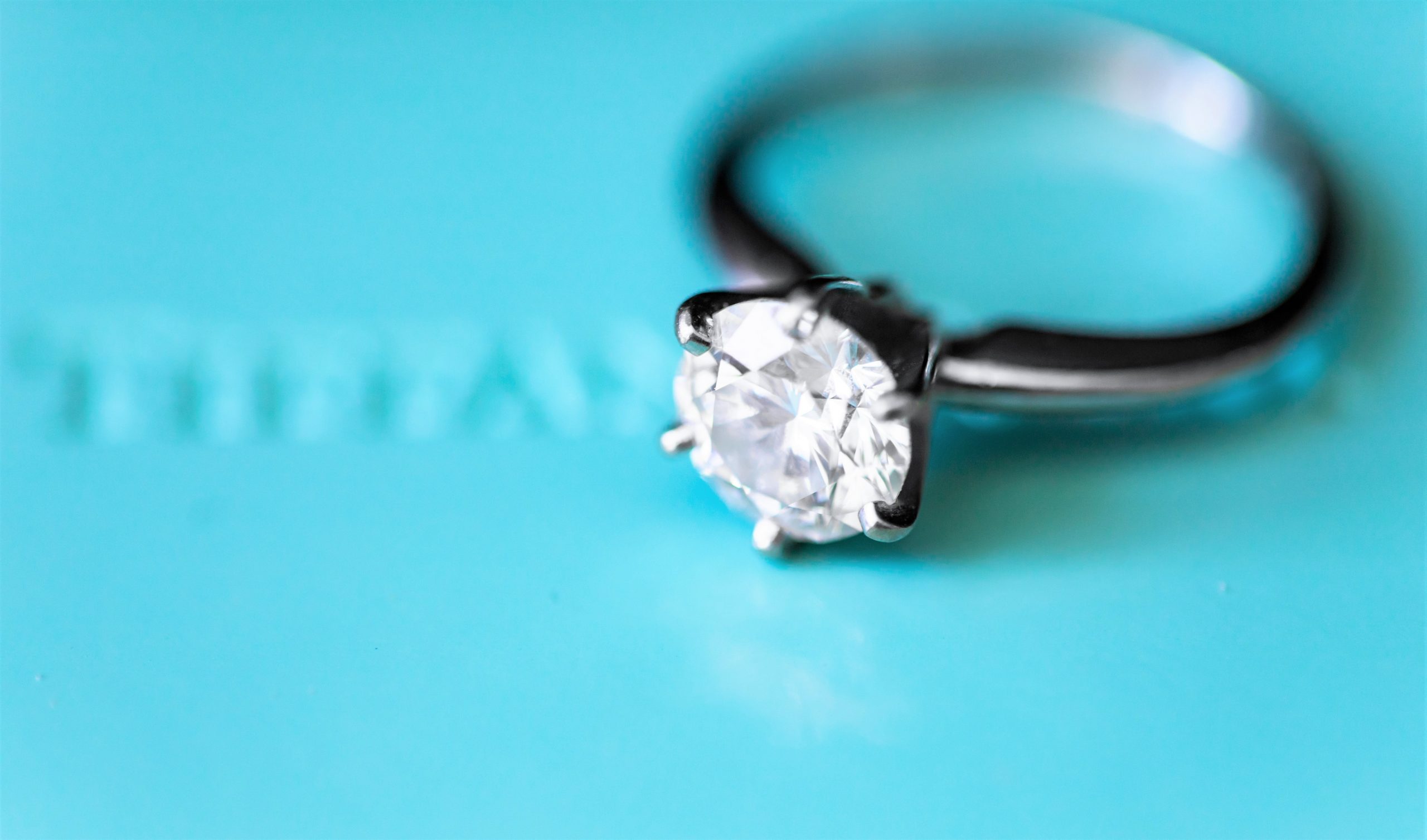Topic 7. Personality, Self, Lifestyle, and Psychographics
Branding
A brand consists of any name, term, design, style, words, symbols or any other feature that distinguishes the goods and services of one seller from another. A brand also distinguishes one product from another in the eyes of the customer. All of its elements (i.e., logo, color, shape, letters, images) work as a psychological trigger or stimulus that causes an association to all other thoughts we have about this brand. Jingles, celebrities, and catchphrases are also oftentimes considered brands.
The word “brand” is derived from the Old Norse ‘brand’ meaning “to burn,” which refers to the practice of producers burning their mark (or brand) onto their products. Italians are considered among the first to use brands in the form of watermarks on paper in the 1200s. However, in mass-marketing, this concept originated in the 19th century with the introduction of packaged goods.
During the Industrial Revolution, the production of many household items, such as soap, was moved from local communities to centralized factories to be mass-produced and sold to the wider market. When shipping their items, factories branded their logo or insignia on the barrels used, thereby extending the meaning of “brand” to that of trademark. This enabled the packaged goods manufacturers to communicate that their products should be trusted as much as local competitors. Campbell’s Soup, Coca-Cola, Juicy Fruit gum, Aunt Jemima, and Quaker Oats were among the first products to be “branded.”

Branding is crucial to the success of any tangible product. In consumer markets, branding can influence whether consumers will buy the product. Branding can also help in the development of a new product by facilitating the extension of a product line or mix, through building on the consumer’s perceptions of the values and character represented by the brand name.

The goal when developing a brand is to create value. You do that by emulating the characteristics and values that your customers desire. Branding is present throughout everything your organization touches—it is not just a logo. Every design shown and communication made to the consumer are examples of branding.
Branding Attributes
Brands have intrinsic and extrinsic attributes. Intrinsic attributes refer to functional characteristics of the brand: its shape, performance, and physical capacity (e.g. Gillette razors shave unwanted hair and are able to do so more closely than most products in their product class because of their curved shape). Should any of these attributes be changed, they will not function in the same way or be the same product.
Examples of extrinsic attributes are features like the price of the Gillette razors, their packaging, the Gillette brand name, and mechanisms that enable consumers to form associations that give meaning to the brand. For example, it can appear more desirable because David Beckham, who is a brand himself, advertises it.
Some refer to a brand’s function as the creation and communication of a multidimensional character of a product—one that is not easily copied and damaged by competitors’ efforts.
Brands have different elements, namely brand personality (functional abilities), brand skill (its fundamental traits—e.g. Chanel No 5 is seen as sexy) and brand relationships (with buyers) or brand magic. These elements are what give the brand added value.
Marketing and advertising are about selling your products and services. Branding is about selling everything associated with your organization . The consumer perception of brands is brand knowledge: brand awareness, recognition and recall, and brand image denote how consumers perceive a brand based on quality and attitudes towards it and what stays in their memory.
Successful Brand Strategies
A successful brand can create and sustain a strong, positive, and lasting impression in the mind of a consumer. Brands provide external cues to taste, design, performance, quality, value, and prestige if they are developed and managed properly. Brands convey positive or negative messages about a product, along with indicating the company or service to the consumer, which is a direct result of past advertising, promotion, and product reputation.
According to brand experts, marketers should be paying attention to the associations consumers develop in connection to a brand. Brand associations are considered to be anything (e.g., sounds, smells, words, and images) that can be linked to a brand and is held in memory by consumers. Brand associations can be positive or negative depending on a consumer’s direct experiences or impressions of a brand. Low and Lamb Jr (2000) tell us that brand associations are critical for marketers because they help establish differentiation, market position, and brand strategies including product line extensions. A successful organization also recognizes that brand associations are made at each point of contact: customer service calls; greetings from a receptionist; conversations with a sales person. Each of these touch points leaves a lasting impression on a consumer and can be held in memory for a long time. For that reason, an organization’s brand strategy should consider the impact employees at all levels will have on brand associations.
Learn more about how attributes, benefits, values, culture, personality, and the user all factored into a brand strategy. The example below has been designed for automobile brand, Mercedes Benz: how might you apply a different brand to these 6 factors?
Six Levels of Meaning in a Brand Strategy
- Attributes: A brand’s set of attributes communicates to its audience how the brand should be perceived and positioned.
The Mercedes-Benz brand, for example, suggests expensive, well-built, well-engineered, durable, high-prestige automobiles. - Benefits: A brand’s set of attributes must be translated into both functional and emotional benefits for the consumer.
For some drivers, purchasing a Mercedes gives them a personal sense of success, accomplishment, and pride. - Values: Consumers seek brands with attributes that align with their own set of personal values.
Mercedes stands for high performance, safety, and prestige. - Culture: A set of brand attributes can communicate and represent a broader set of cultural characteristics that are meaningful to consumers.
Mercedes represents German culture and thereby represents cultural characteristics of organization, efficiency, and high quality. - Personality: Over time, a brand can project its own distinguishable kind of personality. Some brands may be “quirky” or “casual,” “edgy” or “intense”.
Mercedes’ personality may be described as sophisticated, serious, buttoned-up, and achievement-oriented. - User: Every brand is designed with a particular type of user in mind: through its various attributes, a brand suggests who that user might be and what makes them attracted to the brand.
A Mercedes-Benz driver strives to be taken seriously in everything they do. They approach their work with a growth-mentality and are committed to being successful, hard-working, and results-oriented.
Benefits of a Brand
A brand is the personality that identifies a product, service or company (name, term, sign, symbol, design, or combination thereof); it also represents a relationship to key constituencies: customers, staff, partners, investors etc. Proper branding can yield higher product sales, and higher sales of products associated with the brand (or brand association). For example, a customer who loves Pillsbury biscuits (and trusts the brand) is more likely to try other products the company offers, such as chocolate chip cookies.
Some people distinguish the psychological aspect of brand associations (e.g., thoughts, feelings, perceptions, images, experiences, beliefs, attitudes, etc.) that become tied to the brand from the experiential aspect—the sum of all points of contact with the brand, otherwise known as brand experience. Brand experience is a brand’s action perceived by a person. The psychological aspect, sometimes referred to as the brand image, is a symbolic construct created within the minds of people, consisting of all the information and expectations associated with a product, service, or company providing them .

Effective branding of a product also enables the consumer to easily identify the product because the features and benefits have been communicated effectively. This will increase the probability that the product will be accessible and therefore purchased and consumed. Dunkin’ Donuts (rebranded now as just, “Dunkin'”), for example, is a brand that has an established logo and imagery that is familiar to most consumers. The vivid colors and image of a DD cup are easily recognized and distinguished from competitors.
Branding helps create loyalty, decreases the risk of losing market share to the competition by establishing a differential advantage, and allow premium pricing that is acceptable by the consumer because of the perceived value of the brand. Good branding also allows for effective targeting and positioning. For example, Adidas is a brand known its athletic and fashionable clothing, sporting equipment, and footwear. Adidas has a global brand community due to its established global branding that communicates value.
Brand Loyalty
In marketing, brand loyalty refers to a consumer’s commitment to repurchase or otherwise continue using a particular brand by repeatedly buying a product or service. The American Marketing Association (“AMA”) defines brand loyalty as: “[t]he situation in which a consumer generally buys the same manufacturer-originated product or service repeatedly over time rather than buying from multiple suppliers within the category” (MBN, n.d.). This is expressed as a form of “habit-buying” where consumers purchase the same brand due to a “lack of dissatisfaction” (MBN, n.d.). Brand loyalty, however, is not just a form of habit-buying, but also the result of the relationship consumers build with a brand resulting in repeat and dedicated purchases that provide a deeper sense of personal fulfillment and satisfaction.
Aside from a consumer’s willingness or even desire to repurchase a brand, true brand loyalty exists when a consumer is committed to the brand, and when a consumer has a high relative attitude toward the brand, which is then exhibited through repurchase behavior. For example, if Micah has brand loyalty to Company A, they will purchase Company A’s products even if Company B’s products are cheaper and/or of a higher quality.
Brand loyalty is viewed as a multidimensional construct, determined by several distinct psychological processes, such as the customers’ perceived value, brand trust, satisfaction, repeat purchase behavior, and commitment. Commitment and repeat purchase behavior are considered as necessary conditions for brand loyalty, followed by perceived value, satisfaction, and brand trust.
Philip Kotler (2016) defines four customer-types that exhibit similar patterns of behavior:
- Hardcore Loyals, who buy the brand all the time;
- Split Loyals, loyal to two or three brands;
- Shifting Loyals, moving from one brand to another;
- Switchers, with no loyalty (possibly “deal-prone,” constantly looking for bargains, or “vanity prone,” looking for something different).
The benefits of brand loyalty are longer tenure (or staying a customer for longer), and lower sensitivity to price. Recent research found evidence that longer-term customers were indeed less sensitive to price increases. According to Andrew Ehrenberg, consumers buy “portfolios of brands.” They switch regularly between brands, often because they simply want a change. Thus, “brand penetration” or “brand share” reflects only a statistical chance that the majority of customers will buy that brand next time as part of a portfolio of brands. It does not guarantee that they will stay loyal.
By creating promotions and loyalty programs that encourage the consumer to take some sort of action, companies are building brand loyalty by offering more than just an advertisement. Offering incentives like big prizes creates an environment in which customers see the advertiser as more than just the advertiser. Individuals are far more likely to come back to a company that uses interesting promotions or loyalty programs than a company with a static message of “buy our brand because we’re the best.”
Brand-Self Congruity
Self‐congruity is “the likeliness of comparing oneself with other objects and stimuli” (Liu et al., 2012, p. 923). It has been widely adopted in brand‐related research to help both researchers and practitioners understand brand purchasing behavior (see Sirgy, 1986; Sirgy et al., 1997; and Christodoulides and Veloutsou, 2009). Researchers have found that self-congruity has a great impact on consumers’ brand loyalty and positive brand attitude in the context of luxury fashion brand (Liu et al., 2012)
Three important brand self‐congruity concepts by brand attributes:
- Brand Personality Congruity; the likeliness of a consumer’s perception of a brand’s personality compared to that of their own personality.
- Brand User Imagery Congruity; the likeliness of a typical user of a brand, as perceived by a consumer, and the consumer themselves (Sirgy et al., 1997).
- Brand Usage Imagery Congruity. The likeliness of between the typical use of a brand and the appropriate situation of using the brand. Liu et al. (2012) provided a great example of this: A Channel bag may be perceived appropriate for a formal function (e.g., attending a gala) but not for an everyday use.
It is important to note that when it comes to self-congruity, consumers always evaluate based on their own perceptions—their own perceptions toward the brand usage, the brand image, their own image, their own personality, etc.
Ideal- vs. Actual-Self Congruence
Consumers may seek self-congruence(congruity) between the brand or product and their different selves as well. Ideal-self congruence occurs when a consumer seeks the alignment between their ideal-self (i.e., An idealized version of one’s self) and the brand image, or user imagery. This is often seen during a passage-of-rite. For example, when a newly graduate aspires to style themselves with brands and outfits that would portrait them as capable, experienced, and professional (i.e., their ideal social self-image).

Actual-self congruence occurs when a consumer pursues the alignment between their actual-self (i.e., their evaluation of their current self) and the brand image or user imagery. While both types of congruence motivate consumers, when it comes to fashion ideal-self congruence is a stronger predictor of status consumption (Kaur and Anand, 2021). Yet it is important to note that- both types of congruence can influence a consumer at the same time, and they are not mutually exclusive. For example, a person may be aspired to put on suits to be closer to their ideal-self, but may choose a color that they feel safer to wear and is consistent with their actual-self.

Branding doesn’t come without controversy. While some brands may prefer to “play it safe,” other brands recognize the importance of standing up for what is good and humane in the world. Nike chose to make its views and values very public when the brand aligned itself with American Civil rights Activist and football quarterback, Colin Kaepernick. Explore the branding implications of this endorsement more in the student op-ed below.
Nike is a brand recognized globally. The company is a cultural phenomenon and has made a big impact on sports and athletic wear. The Nike “swoosh” can be seen in every major league sport. And because of its enormous worldwide influence, being chosen to represent the brand is a call that every athlete hopes to receive.
In 2016, Colin Kaepernick, who was at the time the quarterback for the San Francisco 49ers, refused to stand for the American national anthem in protest of racial discrimination in America (Mathers, 2019). This led to many other high-profile athletes kneeling during the American national anthem, and eventually high school students began to as well.
Controversy followed Kaepernick as the NFL began to voice their disapproval of his stance. US President Donald Trump himself took to Twitter to reprimand athletes who did not want to stand during the national anthem. Kaepernick continued to protest for the rest of the season and was criticized by fans and NFL sponsors alike. Though a competent and admired player, in 2017 he was not signed to play for the following season.
In 2018, Nike signed Kaepernick to be the face of its newest, “Just Do It” campaign. This was met with significant backlash and many opposing consumers took to the internet to show videos of them defacing their Nike apparel. Despite some consumer backlash, Nike’s stocks went up 5 per cent after signing Kaepernick and their online revenue was up by 31 per cent (Kelleher, 2018).
Undoubtedly Nike took a risk by signing Kaepernick: they knew this endorsement deal with alienate a portion of their consumer market. What Nike also knew was that this decision would benefit them far more in the long-run by associating the brand with an influential public sports figure like Coin Kaepernick.
Media Attributions
- The image of the Coke logo on various backgrounds is by __ drz __ on Unsplash.
- The image of the diamond ring is by __ drz __ on Unsplash.
- The image of the Adidas shoe is by Jakob Owens on Unsplash.
- The image, beach body ready, is by Duncan Cumming on Flickr, under Attribution-NonCommercial (CC BY-NC 2.0) license
- The image of Modcloth is a past promotion material from Modcloth website.
Text Attributions
- The opening three paragraphs (examples; edited); the first paragraph under “Successful Brand Strategies”; the final two paragraphs under “Benefits of a Brand”; the “Six Levels of Meaning in a Brand Strategy” (edited); and, the section under “Brand Loyalty” are adapted from “Branding” by Boundless Marketing, created by Lumen Learning which is licensed under CC BY-SA.
- The fourth paragraph in the introduction and the section under “Branding Attributes” are adapted from “Developing a Brand” by Boundless.com which is licensed under CC BY-SA 4.0.
- The section under “Branding Beyond Consumerism” is adapted from Fleming, C. (n.d.). “Brand or Be Branded” by A Beautiful Trouble which is licensed under CC BY-NC-SA.
- The first two paragraphs under the section “Benefits of a Brand” and the section under “Why Be Generic When You Can Be Branded” are adapted from “The Benefits of a Good Brand” by Boundless Marketing which is licensed under CC BY-NC-SA 4.0.
- “Nike’s Endorsement of Colin Kaepernick” is by Ventura, S. (2019) which is licensed under CC BY-NC-SA.
References
Christodoulides, G. and Veloutsou, C. (2009), “The impact of self‐congruity and brand relations on brand equity facets”, 37th European Marketing Academy Conference (EMAC), 26‐29 May, Nantes, France.
Godin, S. (2009). Define: Brand. Seth Godin [Blog post]. http://sethgodin.typepad.com/seths_blog/2009/12/define-brand.html.
Kelleher, K. (2018, September 05). Nike’s Stock Fell 3% on Colin Kaepernick’s Endorsement Deal. Here’s Why Investors Will Shrug It Off. Fortune. https://fortune.com/2018/09/04/nike-stock-market-buy-sell-kaepernick-boycott/.
Kotler, P. and Keller, K.l. (2016). Marketing management. 15 [ed]. Global. Harlow. https://en.wikipedia.org/wiki/Brand_loyalty#cite_note-20.
Kaur, H., & Anand, S. (2021). Actual versus ideal self: An examination of the impact of fashion self congruence on consumer’s fashion consciousness and status consumption tendencies. Journal of Global Fashion Marketing, 12(2), 146-160.
Liu, F., Li, J., Mizerski, D., & Soh, H. (2012). Self‐congruity, brand attitude, and brand loyalty: a study on luxury brands. European Journal of Marketing, 46(7/8), 922-937.
Low, G.S. and Lamb, C.W. (2000, November). The Measurement and Dimensionality of Brand Associations. Journal of Product & Brand Management, 9(6), 350-370.
MBN: Market Business News (n.d.). Brand loyalty — definition and meaning. Market Business News. https://marketbusinessnews.com/financial-glossary/brand-loyalty/.
Mather, V. (2019, February 15). A Timeline of Colin Kaepernick vs. the N.F.L. New York Times. https://www.nytimes.com/2019/02/15/sports/nfl-colin-kaepernick-protests-timeline.html.
Sirgy, M.J. (1986), Self‐Congruity: Toward a Theory of Personality and Cybernetics, Praeger Publishers, New York, NY.
Sirgy, M. J., Grewal, D., Mangleburg, T. F., Park, J. O., Chon, K. S., Claiborne, C. B., … & Berkman, H. (1997). Assessing the predictive validity of two methods of measuring self-image congruence. Journal of the Academy of Marketing Science, 25, 229-241.
A brand consists of all tangible and intangible components that form a unique identity, thus distinguishing one entity from another, particularly in a competitive category.
These are the functional features and characteristics of a brand - such as its shape, performance, and capacity.
These are the features and characteristics of a brand that enable consumers to form associations with it and give it meaning - such as a brand's price, its packaging, label, name, logo, and image.
The sum of all points of contact ("touchpoints") with a brand.
This concept refers to the thoughts, feelings, perceptions, images, experiences, believes, and attitudes from the consumer's experience that become tied to a brand. Anything linked in our memory to a brand - positive or negative - that forms a lasting impressions in the mind of a consumer.
The sum of all points of contact ("touchpoints") with a brand.
This is a symbolic construct (representation) that is created in our minds based on all the information and expectations we associate with a particular brand.
This term refers to a consumer's commitment to repurchase a particular brand despite having other options available to them.

